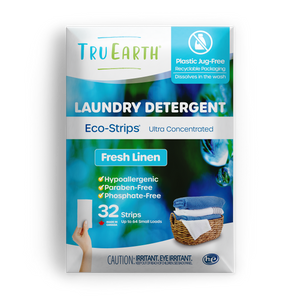Beginning the process of composting at home is not only a simple task but also a powerful step toward environmental sustainability.
This article will walk you through the process of composting, emphasizing its step-by-step nature and shedding light on the myriad benefits it brings. From waste reduction to soil enrichment, home composting is a gratifying practice that aligns seamlessly with an eco-friendly lifestyle.

Understanding the Basics of Composting
Composting unfolds as a natural process wherein organic matter transforms into nutrient-rich soil. The key lies in combining green (nitrogen-rich) and brown (carbon-rich) materials to create an environment conducive for microorganisms to break down waste.
Green materials, such as kitchen scraps and fruit peels, complement brown materials like dried leaves and newspaper.
Setting Up Your Compost Bin
Choose the Right Bin
Selecting a compost bin tailored to your available space and needs is key. Options range from simple DIY bins to commercially available ones equipped with features like aeration vents.
Ideal Location
Locate your compost bin strategically, ensuring accessibility to sunlight and promoting good drainage to prevent waterlogging.
Layering Your Compost
Alternating between layers of green and brown materials encourages balanced decomposition and minimizes potential odors.
What to Compost
Green Materials
- Fruit and vegetable scraps
- Coffee grounds
- Eggshells
- Fresh yard waste
Brown Materials
- Dried leaves
- Shredded newspaper
- Cardboard
- Sawdust (from untreated wood)
What Not to Compost
Maintaining a healthy composting process involves avoiding certain items:
- Meat and dairy products
- Diseased plants
- Pet waste
- Greasy or oily foods
Maintaining Your Compost
Turning the Pile
Regularly turning the compost aids aeration and accelerates decomposition. A pitchfork or compost turner simplifies this mixing process, allowing you to effortlessly incorporate air into the pile.
This aeration not only enhances microbial activity but also ensures that all parts of the compost receive the necessary oxygen for efficient breakdown.
Moisture Management
Ensure proper moisture levels by watering the compost pile as needed, maintaining a dampness akin to a wrung-out sponge. Consistent moisture is necessary for the microbial community to thrive, and by monitoring and adjusting water levels, you create an environment conducive to active decomposition.
Adequate moisture ensures that the composting process remains efficient, breaking down materials effectively and producing nutrient-rich compost for your garden.
Troubleshooting
Address common issues like odors or slow decomposition by adjusting the balance of green and brown materials. If you notice unpleasant odors, it may indicate an excess of nitrogen-rich (green) materials. By adding more carbon-rich (brown) materials, you can restore the balance and reduce odors.
Similarly, if decomposition seems sluggish, consider adjusting the ratio to provide optimal conditions for microorganisms to work effectively, ensuring a smoother composting process. Troubleshooting is a dynamic aspect of composting, and with these adjustments, you can overcome challenges and maintain a healthy, productive compost pile.
Harvesting Your Compost
Recognizing the readiness of your compost involves noting a rich, earthy smell and a dark color. Typically taking a few weeks to months, the finished compost becomes a valuable addition to enrich your garden soil.
Benefits of Composting
Waste Reduction
Composting significantly reduces the amount of kitchen and yard waste destined for landfills. This controlled composting environment ensures organic materials break down naturally, minimizing contributions to methane emissions in landfills.
Soil Enrichment
Home composting yields nutrient-rich soil that augments the fertility and structure of your garden soil. The addition of essential organic matter improves water retention and fosters aeration.
Reduced Need for Chemical Fertilizers
Functioning as a natural fertilizer, compost eliminates the necessity for synthetic alternatives. Its balanced nutrient content supports plant growth and overall soil health.
Greenhouse Gas Mitigation
By diverting organic waste from landfills, composting plays a pivotal role in reducing methane production, a potent greenhouse gas. This contribution aids in shrinking your carbon footprint and actively participating in climate change mitigation.
Cost Savings
Composting at home translates to tangible cost savings. Reduced waste removal expenses and the elimination of store-bought fertilizers contribute to a more budget-friendly and sustainable gardening experience.
Gardening Community
Participate in or initiate a local gardening community to share insights, experiences, and the joy of composting. Collaborative efforts can strengthen environmental initiatives and encourage sustainable practices.

A Greener Tomorrow Through Home Composting
Embracing home composting is a sustainable and gratifying endeavor that harmonizes with eco-friendly living. Armed with a foundational understanding of composting, adeptly managing your compost bin, and recognizing the many benefits, you actively contribute to waste reduction, soil enrichment, and a healthier environment.
The ability to compost at home is an invitation to witness the positive impact it can bring to your garden and, by extension, to the planet. So, embrace the power of composting, and sow the seeds of a greener, healthier future!


